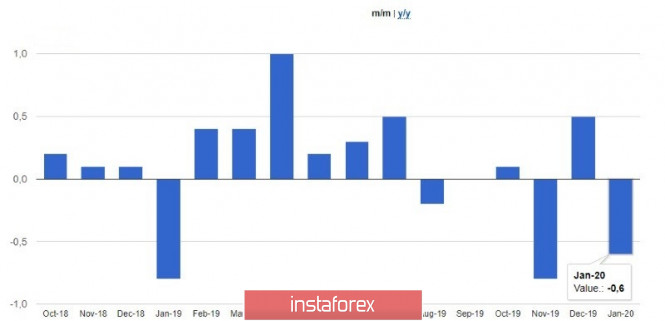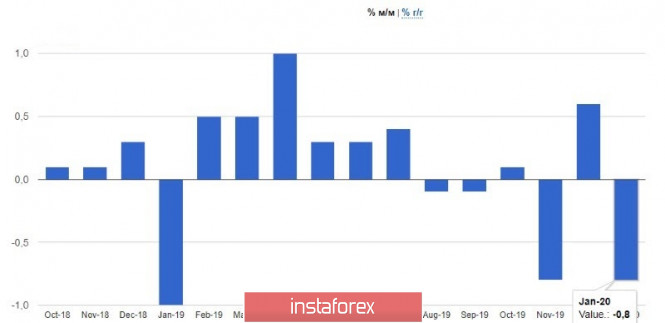The European currency was not very happy with the fact that consumer prices in Germany fell again in January, having justified all the forecasts of analysts, who put on another decline. The main decline in prices was due to a sharp drop in demand for tourism services, and there are reasons for this. According to the statistics agency Destatis, the final CPI of Germany in January 2020 fell by 0.6% compared to December and increased by 1.7% compared to the same period of the previous year. The data fully coincided with the expectations of economists. As for inflation harmonized by EU standards, the index decreased by 0.8% in January compared to December and increased by 1.6% compared to January 2019.

As I noted above, the main reason is the sharp decline in prices for travel packages that occurred due to the outbreak of coronavirus in China. After a series of bad indicators released this and that week on the eurozone countries, many economists no longer consider future forecasts for Europe to be too optimistic. However, today, in the first half of the day, after a breakdown of the year's low in the region of 1.0865, the European Commission kept a report from a larger fall of the euro, in which a number of experts expected to see revised forecasts for economic growth and inflation.

Let me remind you that the European Commission's previous forecast was presented in November 2019.
So, in today's report, the European Commission continues to forecast eurozone GDP growth in 2020 at 1.2% and at a similar level in 2021. But the inflation forecast, on the contrary, was revised for the better. Now economists expect that inflation in the eurozone will be at 1.3% in 2020 against the previous forecast of 1.2%. For 2021, growth is expected at 1.4% against the previous forecast of 1.3%.

So far, the main concern that will negatively affect the eurozone economy is coronavirus, which represents a new bearish risk. There is also a fairly high degree of uncertainty surrounding US trade policy, which is an obstacle to improving sentiment. And if the trade agreement between the US and China has somewhat reduced the bearish risks, what will happen when the White House again raises the issue of duties with the eurozone is still a question.
The European Commission expects that economic growth will remain stable, and all emphasis is placed on domestic demand, while easing fiscal policies may support the economy in the future. The report also called for eurozone countries to pursue structural reforms aimed at boosting economic growth.
As for the technical picture of the EURUSD pair, buyers of risky assets continue to actively fight for the level of 1.0865, having missed that on inflation data in the US, one can only hope for lows in the areas of 1.0840 and 1.0800. If the scenario of profit taking on short positions by large players justifies itself after the data, then the upward correction will be limited by the first intermediate resistance level of 1.0890, but larger highs are seen in the areas of 1.0925 and 1.0950.
The material has been provided by InstaForex Company - www.instaforex.com